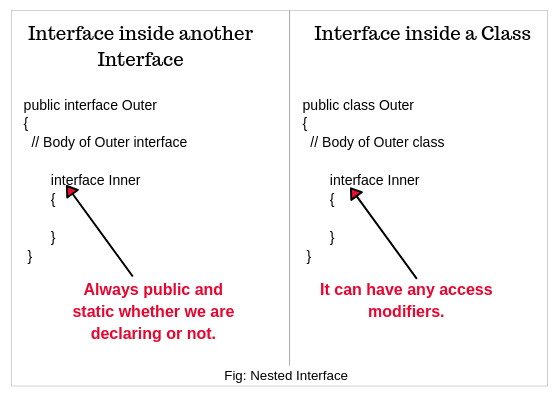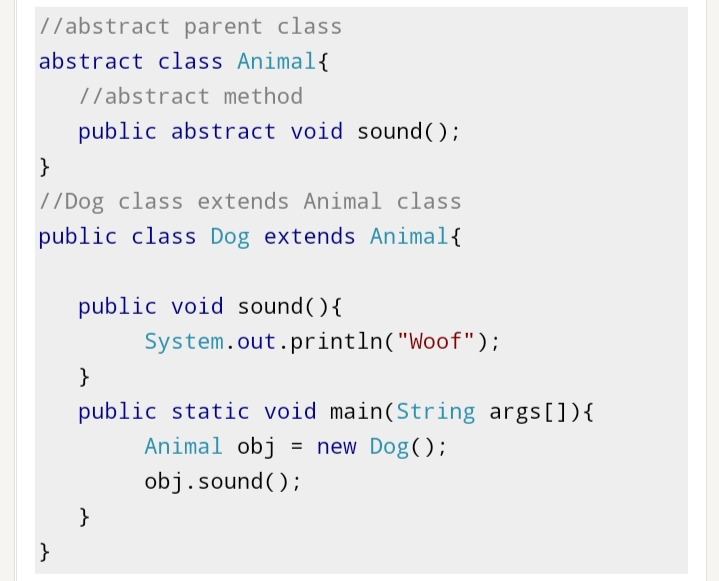

Public class Demo implements void void method1() A Class can implement any number of interface.An Interface can only extend other interface (only one).Interface variables must be initialized at the time of declaration else the compiler will throw error.Zum Beispiel musst du die Methode addition() verwenden. Das bedeutet, dass die Klasse Zahl alle Methoden aus X übernehmen muss. Du hast jetzt eine Klasse Zahl gebaut, die das Interface X implementiert. It is a logical entity that can be seen as a blueprint for creating the objects. Am Beispiel der Methode addition() können wir dir das Interface noch einmal verdeutlichen. It can have When you create an interface it defines. Interfaces are syntactically similar to classes, but you cannot create instance of an Interface and their methods are declared without any body.
JAVA INTERFACE FULL
This is the only way by which we can achieve full abstraction. A Class can be defined as the collection of objects that have a similar type of properties. Interface is a concept which is used to achieve abstraction in Java. They are similar to protocols.Interfaces are declared using the interface keyword, and may only contain method signature and constant declarations (variable declarations that are declared to be both static and final). Class and Interface in Java Class in Java. variables declared should be public, static & final even though if you miss any one or all the qualifiers it will be automatically assigned. An interface in the Java programming language is an abstract type that is used to specify a behavior that classes must implement.Interface cannot have concrete methods(non-abstract methods or methods with body).Methods declared in a interface should be public and abstract.An Interface cannot be instantiated in Java.The above interface will throw compilation errors as the interface cannot have contructor,non-abstract method and main method(as public and abstract qualifiers are only permitted). Also know the difference between Class and Interface.
JAVA INTERFACE HOW TO
("non-abstract method not allowed in Interface") In this tutorial, learn what is an Interface and how to implement Interface in Java with example program. ("Constructor not allowed in Interface") Interface cannot have Constructor, non abstract method and main method. Unlike Abstract class which can have constructor,non abstract method, main method. Also, the variables declared in an interface are public, static & final by default.
JAVA INTERFACE CODE
In the above code we have an interface “Shape” which has a abstract method “size()” and Logic is the class which implements the size() method(provided body). An interface can have methods and variables just like the class but the methods declared in interface are by default abstract (only method signature, no body, see: Java abstract method). A functional interface can contain default and static methods which do have an implementation, in addition to the single unimplemented method.

A functional interface in Java is an interface that contains only a single abstract (unimplemented) method. Public class Logic implements void size() The term Java functional interface was introduced in Java 8.

This is important for both proprietary reasons (for the company that owns the rights) and for easy development on your part. A practical use case of this is in APIs (Application Programming Interfaces).ĪPIs allow your program to communicate with other programs without knowing how they are implemented. You are given an interface AdvancedArithmetic which contains a method signature int divisorsum(int n). In this problem, you will practice your knowledge on interfaces. The interface can be used to achieve polymorphism. Interfaces provide an abstraction between the methods they define & how the user implements them in a class. A Java interface can only contain method signatures and fields. A contract refers to an obligation to implement the methods that an interface defines. An interface is a reference type that is used to enforce a contract with a class.


 0 kommentar(er)
0 kommentar(er)
